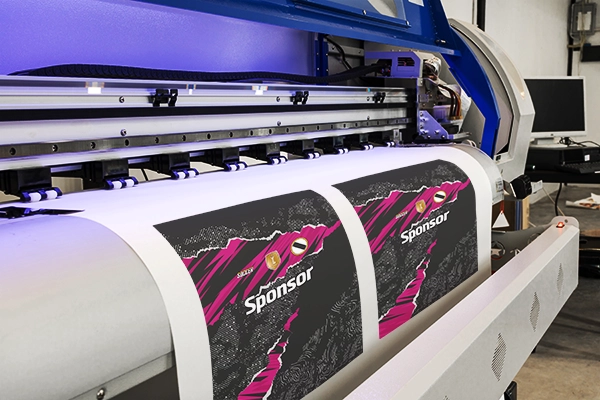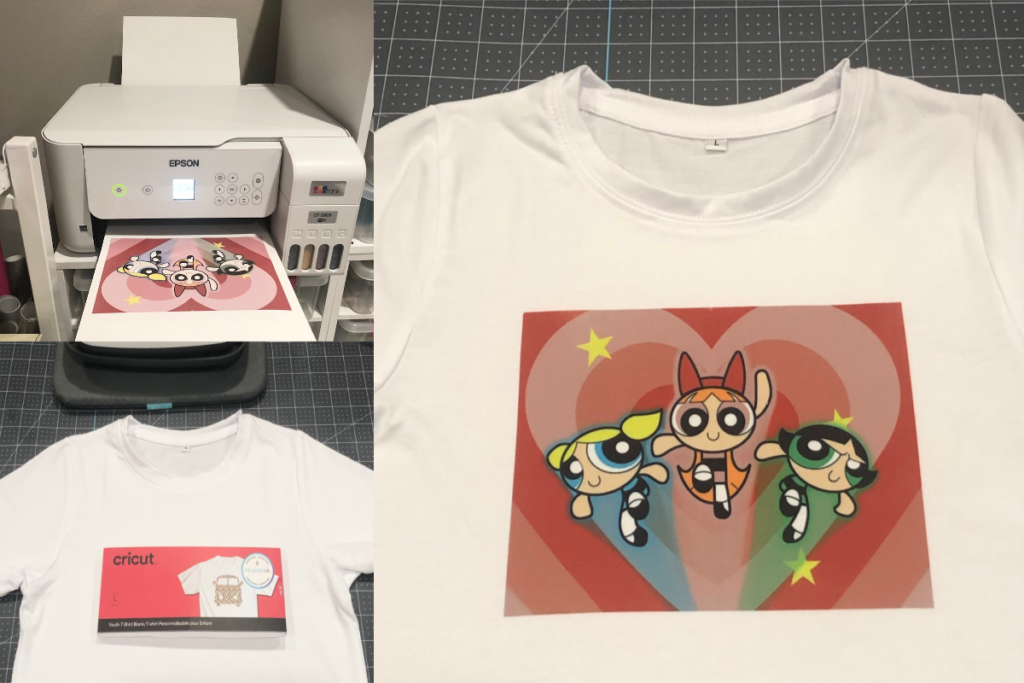The Best Overview to Sublimation Printing for Personalized Garments
Wiki Article
A Comprehensive Overview to the Different Kinds of Cloth Printing Strategies
Starting an expedition of cloth printing methods reveals an interesting intersection of custom and technology. Each technique, from the thorough craftsmanship of block printing to the fast efficiency of screen printing, offers unique functions and offers unique advantages. Digital printing's adaptability and ecological awareness stand in stark contrast to the speedy customization of warm transfer printing. At the same time, dye sublimation printing mesmerizes with its capacity to generate dynamic, enduring layouts on artificial fabrics. To truly understand the subtleties and possible applications of these diverse techniques, a deeper investigation is crucial.Block Printing
Block Printing, one of the earliest approaches of fabric design, has a rich background that dates back to old people. The process involves sculpting complex styles into wooden blocks, which are after that dipped in dye and pressed onto textile to produce patterns.The precision and workmanship associated with block printing make it a labor-intensive process, but it additionally permits a high degree of customization. Craftsmens can produce unique patterns by incorporating different blocks or differing the application of color. This flexibility has actually contributed to the enduring appeal of block printing in both modern and traditional fabric design.
Block printing is specifically valued for its aesthetic qualities, consisting of the slight variations in pattern and shade that result from the hand-printing procedure. These flaws offer a special character per piece, identifying it from mass-produced fabrics. Regardless of advancements in modern-day printing innovations, obstruct printing remains a valued technique, celebrated for its historic importance and imaginative value.
Screen Printing
Display printing, another famous fabric decoration strategy, has transformed the sector with its efficiency and adaptability. This approach involves producing a pattern, known as a screen, and utilizing it to use layers of ink on the printing surface. Each color in the style calls for a separate screen, which enables dynamic and complex multi-colored prints.
One of the crucial benefits of display printing is its flexibility to various types of fabrics, including cotton, polyester, and blends. This method is especially appropriate for large-volume orders because of its cost-effectiveness and rate. The durability of the prints is another significant benefit, as the ink bonds well with the fabric, guaranteeing lasting styles that stand up to several laundries.
The process begins with preparing the screens by covering them with a light-sensitive emulsion. Once dried, the layout is moved onto the emulsion-coated display utilizing a UV light. The subjected areas harden while the unexposed parts are removed, developing a pattern. Ink is then pushed through the pattern onto the textile utilizing a squeegee.
Display printing is widely used in the garment industry, marketing products, and personalized clothing. Its capability for top quality, detailed prints safeguards its condition as a cornerstone technique in textile printing.
Digital Printing
Digital printing has promptly emerged as an advanced technique in the fabric industry, leveraging innovative innovation to produce high-resolution layouts directly onto fabric. Unlike typical techniques, electronic printing utilizes inkjet printers to down payment pigment or dye-based inks onto fabrics, enabling complex and dynamic patterns with a remarkable level of detail and color precision.One of the key advantages of electronic printing is its flexibility. This technique permits on-demand printing, which substantially reduces waste and decreases inventory expenses. Additionally, it supports brief runs and custom styles, making it ideal for limited-edition collections and bespoke jobs. The removal of screens and other arrangement requirements even more boosts efficiency, decreasing manufacturing time and labor costs.
Moreover, digital printing is ecologically pleasant. DTF printing. It utilizes water-based inks and calls for much less water and power contrasted to conventional techniques, lining up with sustainable methods. The accuracy of electronic printing additionally allows the usage of a wider array of fabrics, including cotton, silk, polyester, and blends, guaranteeing flexibility across different applications
Warm Transfer Printing
How does heat transfer printing revolutionize textile layout? This technique has brought significant advancements by permitting vivid and detailed styles to be transferred onto a variety of textiles with exceptional precision. Warmth transfer printing entails utilizing heat and stress to transfer a design from a particularly developed paper onto fabric. This procedure begins with printing the wanted picture onto transfer paper using specialized inks. When the image is published, the paper is put onto the fabric and based on a heat press, which moves the ink from the paper to the material.
One of the main benefits of warm transfer printing is its capacity to create high-quality, in-depth images swiftly and efficiently. It is especially well-suited for little manufacturing runs and customized orders, making it a preferred choice for individualized garments and marketing things. Additionally, this DTF printing method is functional, accommodating different kinds of fabrics including cotton, polyester, and blends.
In addition, heat transfer printing is fairly cost-efficient compared to other techniques, as it calls for minimal setup and lower first financial investment - sublimation printing. This cost, combined with its ability for producing dynamic, long lasting prints, emphasizes its pivotal role in modern material style

Dye Sublimation Printing
Dye sublimation printing, a sophisticated textile printing strategy, uses unrivaled vibrancy and longevity for layouts on different synthetic fabrics. The published transfer paper is then positioned on the fabric, and both are subjected to high warm and pressure making use of a warm press.
One of the vital benefits of dye sublimation printing is its capacity to create continuous-tone prints with detailed details and vibrant shades. Unlike other printing approaches, the dye comes to be part of the fabric rather than sitting on top of it, causing a soft and breathable surface. This strategy is specifically efficient on polyester and various other synthetic products, making it a prominent choice for sports apparel, banners, and home fabrics. Furthermore, dye sublimation is eco-friendly, as it calls for no water and generates marginal waste, straightening with lasting manufacturing methods.
Conclusion
In summary, cloth printing strategies each offer distinct advantages customized to various requirements and applications. Block printing is admired for its artisanal high quality, while screen printing is useful for high-volume manufacturing. Digital printing gives flexibility and ecological benefits, whereas warm transfer printing is excellent for rapid customization. Color sublimation printing generates dazzling, durable layouts on synthetic fabrics. The variety and advancement within these methods highlight the vibrant and evolving nature of the towel printing market.Each approach, from the precise craftsmanship of block printing to the fast effectiveness of screen printing, serves distinct purposes and offers distinct benefits. Digital printing's flexibility and ecological awareness stand in plain contrast to the swift customization of heat transfer printing. Regardless of breakthroughs in modern-day printing modern technologies, block printing remains a cherished strategy, commemorated for its historical importance and artistic worth.
Dye sublimation printing, an innovative material printing technique, offers unparalleled vibrancy and long life for styles on various artificial materials. Digital printing offers flexibility and environmental advantages, whereas warm transfer printing is perfect for quick modification.
Report this wiki page